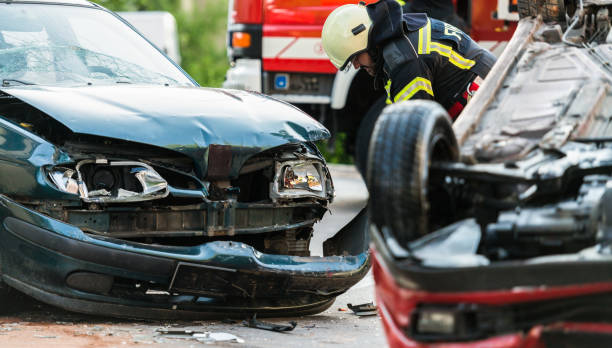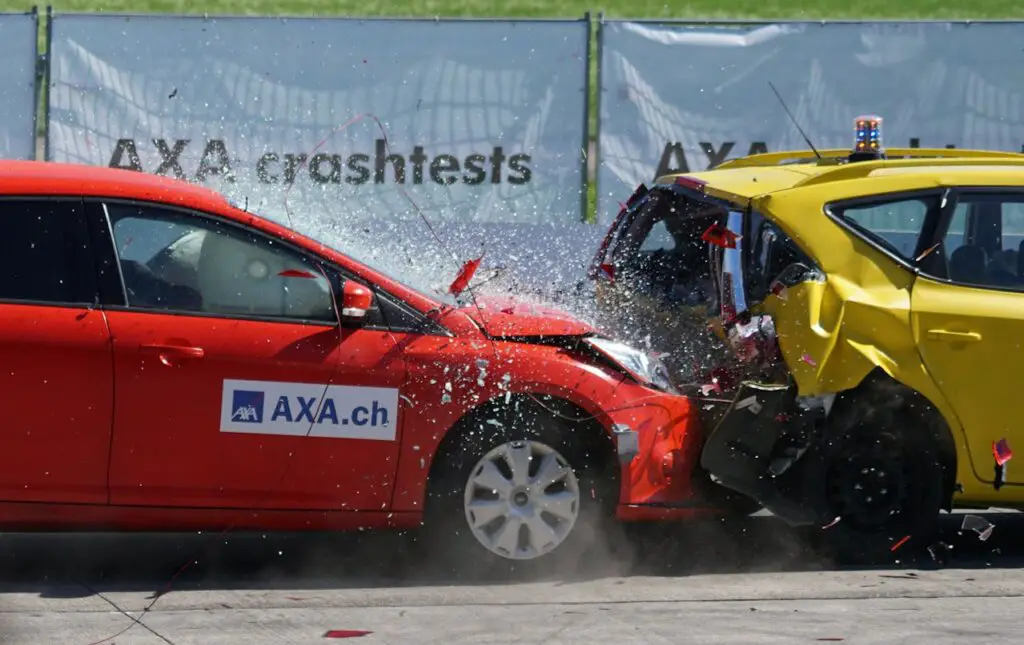Related Posts
In many situations, passing a yellow light is safe as long as you’re close to the intersection. But what if trying to beat a yellow light causes an accident? Well, your level of liability will depend on the circumstances of the accident.
One excellent example is a viral video of a red Mustang getting into a crash while trying to beat a yellow light. The footage showed the red vehicle speeding to pass the yellow indicator but crashed after trying to avoid a white sedan negligently merging into the lane.
This situation raised questions online as people wondered whether law enforcement would blame the Mustang for the crash or the sedan for the negligent lane merge.
Ugo Lord Breaks Down The Accident
As a seasoned attorney in several legal cases, Ugo Lord provided his expert opinion on the confusing crash. He begins his analysis by first pointing out a semi on the right lane while the Mustang is on the left.
“All of a sudden, this white sedan makes a right-hand turn into a lane occupied by the red Mustang.” Dr. Lord then emphatically states that the red Mustang had the right of way since beating a yellow light isn’t illegal as long as the coast is clear.
He points out that while the Mustang tried to escape the red light, it swerved to the left and right. This movement caused the crash, but it wasn’t due to bad driving but because of the white sedan entering the occupied lane.
Essentially, the driver tried to avoid simultaneously hitting the sedan and the semi, leading to the accident. Ugo Lord concludes that the accident would have never happened if the white car never tried to merge into the lane negligently.
Therefore, this accident will most likely be seen as a miss-and-run, making the white sedan liable for all the damages that happened next.
Understanding Miss-and-Run Accidents
What Happens in a Miss-and-Run?

A miss-and-run, a phantom driver accident, occurs without physical contact between two vehicles. Instead, it’s the actions of one driver that cause another to collide with a third party, resulting in damages.
This type of accident typically happens when a driver attempts to avoid an imminent crash with an object, another vehicle, or even an animal, leading to an accident where the driver is injured and the car is damaged.
Liability in No-Contact Car Accidents
It’s a common misconception that if another driver didn’t physically crash into you, they’re not at fault. However, this isn’t the case. If a driver’s reckless or illegal maneuver—like running a stop sign, changing lanes without signaling, or making an unsafe turn—causes you to take evasive action and crash, they are liable.
This holds even if there was no physical contact. The same principle applies if a pedestrian, child, or pet’s actions lead to a crash; liability may fall on the individual, the child’s parents, or the pet’s owner.
When External Forces Cause Accidents
Sometimes, accidents are caused by external forces, such as natural events. For instance, if a lightning strike causes a tree to fall, leading to a crash, this is considered a single-car accident. In such cases, you would report the incident to your insurance provider, emphasizing that it occurred through no fault of your own, akin to a parked car damaged by a fallen tree branch.
The Role of Yellow Traffic Lights

It’s worth mentioning that a yellow traffic light warns drivers to slow down and prepare to stop. However, some drivers misinterpret this signal as an opportunity to speed up and rush through the intersection.
According to California Vehicle Code 21452, a steady circular yellow or yellow arrow signal warns drivers that the green movement is ending, and a red indication will follow. This implies that drivers should not try to beat the yellow light but rather prepare to stop, ensuring safety for all road users.
It’s generally acceptable to proceed through a yellow light if you are already within the intersection or so close that stopping safely is impossible. The key factor is safety; if you can stop in a controlled manner, you should do so.
If stopping might cause an accident, such as a rear-end collision due to sudden braking, it’s safer to continue. However, this does not mean you should speed up to beat the yellow light. The yellow light intends to signal that the light will soon turn red, and you should prepare to stop if it’s safe to do so
Conclusion: Navigating the Aftermath of a Miss-and-Run
It’s essential to remember that even if another vehicle didn’t physically collide with yours, the driver could still face legal repercussions for the actions that led to your accident. Therefore, understanding your rights and the nuances of traffic laws is crucial in these situations.
If you find yourself in the unfortunate position of dealing with the consequences of a miss-and-run, don’t navigate the legal waters alone. Contact Ugo Lord, a seasoned attorney with expertise in handling complex traffic accident cases.

